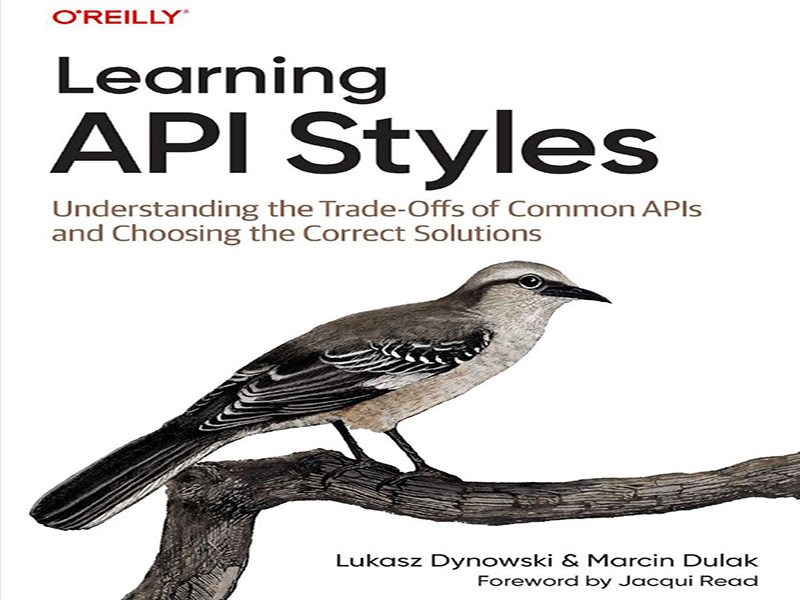- عنوان کتاب: Learning API Styles -Understanding the Trade-Offs of Common APIs and Choosing the Correct Solutions
- نویسنده: Lukasz Dynowski Marcin Dulak
- حوزه: توسعه API
- سال انتشار: 2025
- تعداد صفحه: 659
- زبان اصلی: انگلیسی
- نوع فایل: pdf
- حجم فایل: 10.2 مگابایت
چه متوجه باشید چه نباشید، حضور APIها همه جا هست. بدون APIها، تلفن هوشمند شما قادر به دریافت آخرین پیشبینیهای آب و هوا نخواهد بود و تیم کنترل زمینی ماموریت قادر به برقراری ارتباط از طریق شبکه فضای عمیق ناسا با خدمه یا با ماهوارههای فعال در مدار زمین نخواهد بود. APIها قدرت دگرگونسازی دارند و صنعت مالی یکی از نمونههای آن است. امروزه دیگر لازم نیست برای انجام کارهایتان به صورت حضوری به بانک مراجعه کنید. شما میتوانید اکثر کارها را از طریق وب، با استفاده از تلفن هوشمند (اپلیکیشن موبایل) یا از طریق تماس تلفنی انجام دهید. APIها (رابطهای برنامهنویسی کاربردی) پشت موفقیت شرکتهای بزرگ فناوری مانند آمازون، گوگل، مایکروسافت، OpenAI، Revolut و Salesforce هستند و از طریق کانالهای دیجیتال، درآمد قابل توجهی کسب میکنند. APIها رگهایی هستند که دادهها از طریق آنها جریان مییابند و برخی از فناوریها مانند Kubernetes بدون آنها کار نمیکنند. رابط برنامهنویسی کاربردی (API) بسته به زمینه میتواند معانی مختلفی داشته باشد. این اصطلاح عمدتاً با نرمافزار مرتبط است، اما میتواند برای سختافزار نیز به کار رود. در چارچوب نرمافزار، یک API میتواند یک رابط کتابخانهای یا یک API مبتنی بر شبکه (که رایجترین اصطلاح مرتبط است) را توصیف کند. ما API را به عنوان یک نقطه تعامل تعریف میکنیم که به اجزای نرمافزار اجازه میدهد تا با هم ارتباط برقرار کنند. این API بدون افشای پیچیدگی سیستم زیربنایی، عملکردی را ارائه میدهد؛ رفتار سیستم را از جزئیات پیادهسازی آن جدا میکند. APIها در درجه اول توسط توسعهدهندگان استفاده میشوند که آنها را به صورت برنامهنویسی در نرمافزار ادغام میکنند تا قابلیت همکاری درون یا بین سیستمها را فراهم کنند. API مالکیت را تفکیک میکند، که امکان نگهداری بهتر را فراهم میکند، زیرا آنچه در پشت API قرار دارد، مسئولیت سیستمی است که آن را در معرض دید قرار میدهد. در طول دهههای گذشته، شاهد ظهور و گسترش اینترنت بودهایم. اینترنت یک شبکه گسترده و به هم پیوسته از سیستمهای کامپیوتری است که به دستگاههای مختلف در سراسر جهان اجازه میدهد تا با یکدیگر ارتباط برقرار کنند. پایه و اساس این ارتباط، مجموعه TCP/IP است که به عنوان زبان شبکه عمل میکند و برنامهها و دستگاهها را قادر میسازد تا اطلاعات را تبادل کنند. این کتاب بر APIهای مبتنی بر شبکه تمرکز دارد، که گروهی از APIها هستند که نرمافزارها برای ارتباط از طریق شبکه (معمولاً اینترنت) از آنها استفاده میکنند. یک API را میتوان به عنوان یک زبان مشترک (که توسط پروتکلها، قوانین و قراردادها اداره میشود) در نظر گرفت که برنامههای نرمافزاری برای تبادل دادهها از آن استفاده میکنند. مانند انسانی که میتواند به چندین زبان صحبت کند، نرمافزار نیز میتواند از APIهای زیادی برای برقراری ارتباط استفاده کند.
Whether you realize it or not, the presence of APIs is ubiquitous. Without APIs, your smartphone wouldn’t be able to get the latest weather forecasts, and ground control mission wouldn’t be able to communicate over NASA’s deep space network with the crew, or with active satellites orbiting the Earth. APIs have transformative power, and the finance industry is one example. Nowadays, you don’t have to visit a bank in person to run your errands. You can do most things over the web, using a smartphone (mobile application), or over a phone call. APIs are behind the success of major technological companies like Amazon, Google, Microsoft, OpenAI, Revolut, and Salesforce, generating substantial amounts of revenue via digital channels. APIs are the veins through which data flows, and some technologies like Kubernetes wouldn’t work without them. Application programming interface (API) can have different meanings depending on the context. The term is mainly associated with software, but it can also be applied to hardware. Within the software context, an API can describe a library interface or a network-based API (the most commonly associated term). We define API as an interaction point that allows software components to communicate. The API provides functionality without exposing the underlying system’s complexity; it separates system behavior from its implementation details. APIs are primarily used by developers, who programmatically integrate them into the software to enable interoperability within or between systems. The API separates ownership, which allows for better maintenance because what’s behind the API is the responsibility of the system that exposes it. Over the past decades, we’ve witnessed the rise and expansion of the internet. The internet is a vast, interconnected network of computer systems that allows devices worldwide to communicate with one another. The foundation of this communication is the TCP/IP suite, which acts as the language of the network, enabling applications and devices to exchange information. This book focuses on network-based APIs, which are a group of APIs that software uses to communicate over the network (typically the internet). An API can be thought of as a shared language (governed by protocols, rules, and conventions) that software applications use to exchange data. Like a human who can speak multiple languages, software can utilize many APIs to communicate.
این کتاب را میتوانید از لینک زیر بصورت رایگان دانلود کنید:
Download: Learning API Styles




































نظرات کاربران